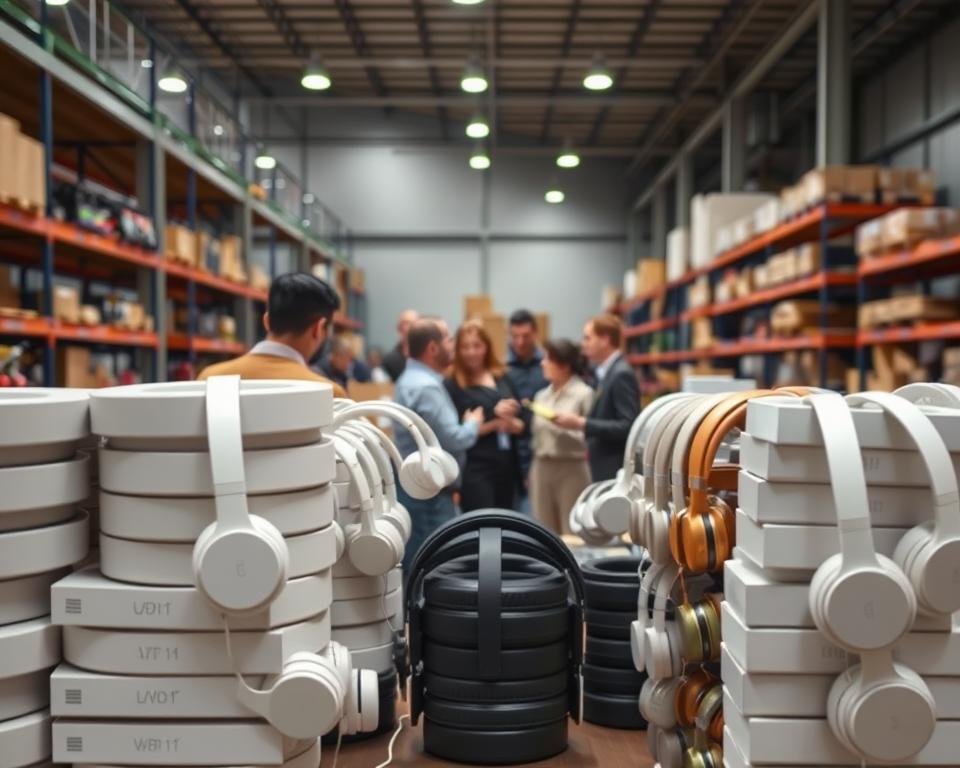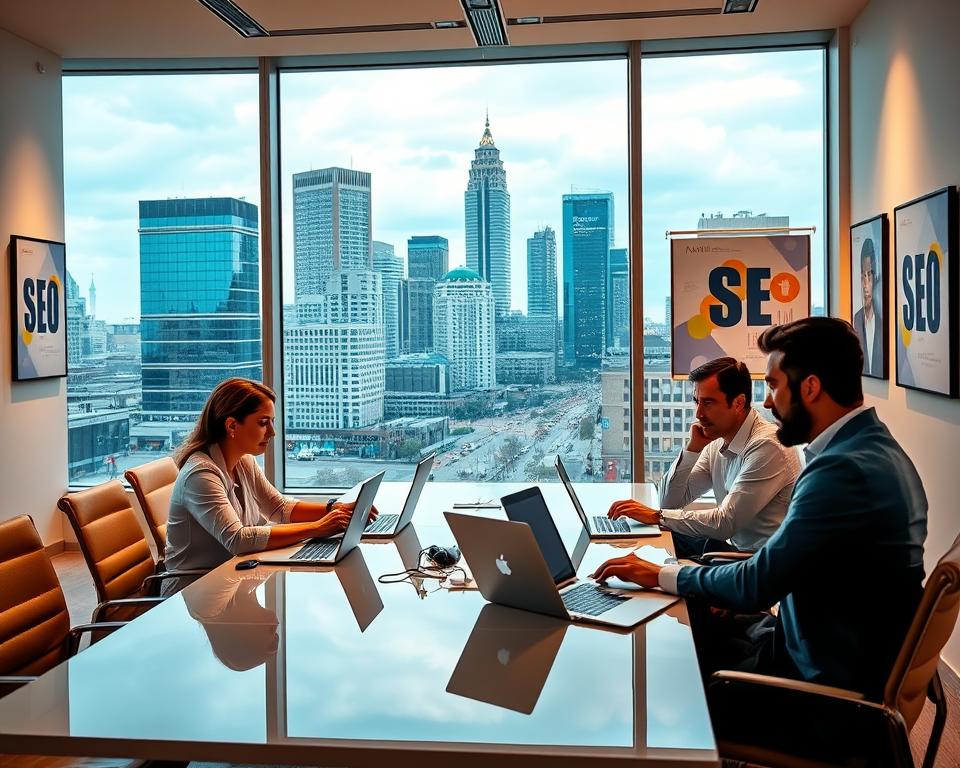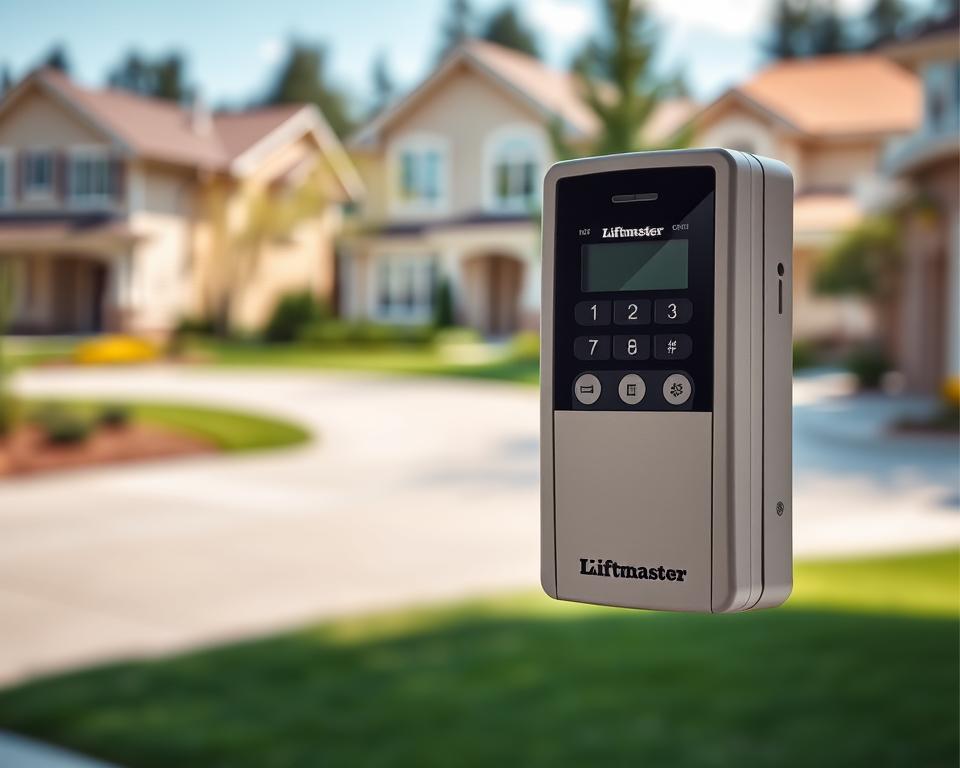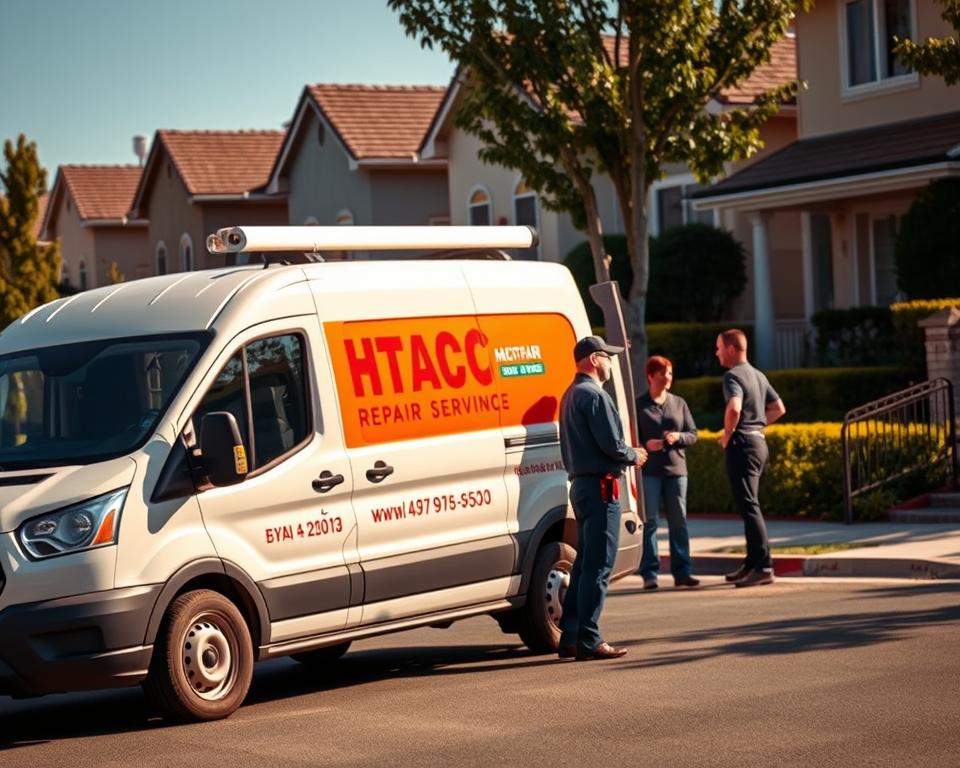Purchase Headphones Wholesale: Top Bargains For Merchants
“In the middle hardship lies a chance.” – Albert Einstein. This timeless quote vibrates deeply inside the field of trade, emphasizing the benefits of purchasing sound gear wholesale. In today’s competitive market, savvy resellers find a hidden potential in sourcing affordable wholesale audio devices. This allows them to supply top-tier sound equipment while maximizing their earnings.
By partnering with a reliable wholesale headphones supplier, resellers can access a variety of designs to meet their customers’ varied needs. Offering inside-ear variants for mobile users to over-ear models for audiophiles, there’s something for everyone. Companies like KoleImports & Closeouts are experts in exclusive deals tailored for headphones bulk order buyers. This guarantees that venture capitalists can succeed in a saturated marketplace.
Overview to bulk headphones
Mass audio devices are fundamental for enterprises looking to supply budget-friendly audio gear. By purchasing economical wholesale audio devices, resellers can reduce expenses and boost margins. This strategy is excellent for stores, establishments, and agencies looking to offer high-caliber sound systems at budget prices.
The wholesale headphones market provides an assortment of choices, including small headphones, full-sized versions, and sound-canceling models. Academies could employ these for learning objectives, while fitness centers use them for members enjoying audio in exercise sessions. Access to a dependable inventory of wholesale headphones USA can help businesses broaden their stock and satisfy consumer requirements.
Reasons to Buy Audio Devices in Bulk?
Buying audio devices wholesale offers a distinct opportunity for retailers to boost their profit margins. When you purchase wholesale headphones, you obtain rates that are better valued. This affords enhanced flexibility in costing, resulting in greater profits for your business. Distributors regularly supply special reductions, resulting in significant economies.
In the current market, the need for quality sound equipment is increasing. By selecting mass earphones, retailers can meet this demand effectively. Mass acquisitions diminish the need for constant restocking, guaranteeing a regular provision of favored versions. This helps businesses maintain a constructive relationship with their clients.
Also, the availability of budget wholesale headphones permits merchants to concentrate on marketing and sales. This efficient strategy affords merchants a competitive edge, empowering them to surpass rivals. Constructing a robust stock from wholesale sources lowers expenditures but also draws a diverse range of clients.
Acquire Audio Devices Wholesale: Benefits for Merchants
Opting for wholesale audio devices delivers substantial merits to retailers looking to boost their offerings and returns. The ability to select from a diverse array of models enables businesses to cater to the diverse preferences of their customers. This flexibility is crucial to succeeding in a fiercely competitive market.
Access to a Range of Styles and Patterns
Merchants gain access to a extensive collection of headphone designs, including over-ear , in-ear and gaming audio devices. This variety widens the appeal to multiple client segments but also allows for the offering of top-tier wholesale headphones. Such products address varied audio preferences, assuring that every client’s desires are met.
Wholesalers like KoleImports & Closeouts supply an wide-ranging collection, making it easier for enterprises to satisfy their customers’ needs efficiently.
Market-Competitive Rates for Store Success
Engaging in bulk orders for audio devices usually yields significant cost savings. This approach empowers merchants to determine competitive retail costs while maintaining a adequate profit margin. By participating in wholesale transactions, companies can modify their cost strategy tactically. This flexibility can substantially increase turnover and general commercial success.

Varieties of Audio Devices Offered in Wholesale
Exploring bulk order headphones necessitates understanding the various categories provided. Each category presents distinct features, drawing various buyer tastes. This knowledge is vital to reaching the right audience and meeting market demands.
Over-Ear Headphones and Their Benefits
Over-the-Ear audio devices are renowned for their coziness and superior audio quality. They rest comfortably around the ears, enhancing the sound experience. This renders them perfect for professional use or long-duration listening. Retailers can discover a wide range of models from multiple labels through a wholesale audio distributor.
Earbuds: Ideal for Mobility
In-ear headphones have gained popularity for their compact configuration and suitability for dynamic living. They are optimal for workout lovers and daily riders who need a lightweight audio solution. By sourcing wholesale in-ear audio devices, merchants can capitalize on the expanding sector of active buyers.
Gaming Audio Devices and Their Popularity
The gaming industry’s expansion has established gaming headsets essential for avid fans. These headsets offer superior audio and features like 360° sound and noise reduction for engaging gameplay. Identifying high-quality gaming audio devices can be a profitable venture for retailers in today’s market.
Locating a Trustworthy Bulk Headphones Distributor
Identifying a credible wholesale audio devices supplier is key for resellers looking to sustain product excellence high and supply chains smooth. Initiate by examining the company’s reputation. Look for customer feedback and testimonials from other enterprises. These can offer useful clues into past customer experiences, leading you towards the premier wholesale headphones.
When assessing suppliers, prioritize quality standards. Request samples to test the longevity and efficacy of various audio devices. This measure is critical to steer clear of future problems due to inferior items. It also assists in rendering informed choices.
Opting for budget-friendly wholesale headphones helps manage costs while delivering quality to your buyers is crucial. Make sure the supplier provides market-competitive rates without compromising on quality. Partnering with a trusted distributor like KoleImports & Closeouts can offer access to premium items designed for resellers.
Selecting the Ideal Wholesale Headphones
When resellers intend to purchase audio devices wholesale, they deal with a variety of factors. It’s imperative to concentrate on characteristics and specs to meet customer needs. Evaluating costs from vendors can discover economies and improve returns.
Evaluate Features and Specifications
Sound quality, comfort, and longevity are crucial for any seller. Being aware of what customers want is critical. Attributes like noise cancellation, wireless connectivity, and battery endurance affect satisfaction. Reviewing these features assists merchants pick the right mass headphones for their market.
Comparing Prices Among Multiple Wholesale Suppliers
Identifying the best rates is essential when purchasing audio devices wholesale. Vendors provide varied rates for similar products, making evaluation necessary. Exclusive deals or wholesale rates can result in substantial savings. Merchants who invest time in comparing can offer premium items at better costs.
Advice for Making a Mass Acquisition of Sound Equipment
Making a wholesale purchase for audio devices can be a savvy choice for retailers aiming to boost profits. It’s important to understand the minimal order requirements and capitalize on seasonal discounts. These strategies can substantially boost the worth of your orders. Consider the following advice to guide you through the process.
Comprehending Order Minimums
Numerous vendors have minimum order quantities for mass headphone orders. It’s vital to know these stipulations to avoid extra costs or delays. Before you commit to a supplier, ask about their exact order thresholds. This will assist in securing wholesale prices. Understanding their policies permits better planning and sidesteps unexpected issues.
Utilizing Seasonal Promotions for Enhanced Offers
Seasonal discounts offer chances to buy inexpensive bulk headphones at lower prices. Coordinating your orders during these times can yield substantial discounts. Keep an eye out for festivities or exclusive deals when suppliers often provide discounts. This method lowers your costs but also ensures you have enough stock for peak demand periods.
The Emergence of Digital Wholesale Headphone Suppliers
The shift to e-commerce has transformed how businesses acquire audio devices wholesale. Digital bulk suppliers have risen in prominence due to their vast selections and accessibility. Now, resellers can peruse a diverse selection of wholesale headphones in USA from the safety of their residences. This convenience has significantly improved the shopping experience.
These platforms deliver competitive pricing, empowering merchants to increase their profit margins. The availability of quick shipping options improves their allure, ensuring products are shipped quickly. Merchants can explore various styles and brands, facilitating the identification of the ideal products to satisfy market demands.
As the internet-based wholesale sector grows, it’s imperative for merchants to utilize these prospects. Whether operating a modest storefront or a substantial digital outlet, grasping the advantages of partnering with dependable online distributors is crucial in today’s competitive environment.
KoleImports & Closeouts: Your Trusted Resource for Wholesale Audio Devices
KoleImports & Closeouts is a top choice for locating a reliable wholesale headphones supplier. Resellers benefit from establishing an account, unlocking members-only rates and tailored product ideas tailored to their needs.
Steps to Register for Price Access
The enrollment process is both rapid and straightforward. Customers can rapidly enroll on the site, providing the mandatory details. Upon sign-up, they activate market-competitive prices for bulk orders, increasing their profit margins.
Special Offers and Custom Product Picks
Account holders receive customized suggestions based on their acquisition record and tastes. They also keep abreast of special promotions. This allows them to take advantage of special offers, making sure they secure the best rates for mass purchases.
Advertising Your Bulk Headphones
In the arena of wholesale audio devices, advertising is essential to building a robust brand and increasing turnover. Retailers of affordable wholesale headphones must shine in a dense market. By focusing their promotional efforts, they can reach the right people and generate excitement in premium audio devices.
Establishing Your Niche in the Competitive Marketplace
To flourish in the wholesale bulk headphone industry, understanding your place is vital. Principal tactics include:
- Identifying Target Customers: Know your ideal clients and adapt your offerings to their needs.
- Highlighting Unique Features: Showcase what sets your headphones apart, like innovative design or premium sound quality.
- Promotional Offers: Engage customers with periodic offers or discounts on bulk purchases.
Leveraging Social Platforms for Marketing
Social media is a potent resource for promoting wholesale headphones. It permits retailers to:
- Display Your Products: Distribute top-notch visuals and clips of your sound equipment’s qualities and designs.
- Engage with Customers: Establish a network around your brand by engaging with customers.
- Leverage Influencer Partnerships: Work with influencers in music and lifestyle to extend your influence and reputation.
The Outlook of Bulk Headphone Industry
The wholesale audio device market is approaching major revolutions, propelled by innovation and shifting consumer tastes. The growing popularity of smart headsets, combined with the incorporation of innovative functionalities, requires resellers in the wholesale headset field stay alert and adaptable. The priority of exceptional audio quality, advanced noise cancellation, and intuitive technology is destined to transform our perception of sound. This evolution will certainly boost bulk earphones to a key role in this evolution.
Another key movement on the rise is the emphasis on eco-friendly methods within the headphones wholesale industry. The use of eco-friendly materials and ethical manufacturing methods is growing in importance in purchaser preferences. Resellers who champion sustainability not only satisfy eco-aware consumers but also emerge as industry leaders. This differentiator differentiates them from their competitors.
As these tendencies progress, strategic foresight will be essential to succeeding in the wholesale audio device market. Enterprises must grasp the nuances of consumer preferences and tech advances to revamp their selections successfully. This pre-emptive tactic will guarantee their lasting presence and promote development within the wholesale earphones market.
Frequently Asked Questions
What are the key benefits of buying headphones wholesale?
Buying headphones wholesale provides various merits. It enables retailers to access premium audio gear at reduced costs. This move enhances earnings. It also supplies a wide variety of styles to fulfill buyer requirements.
How can I find reliable wholesale headphone suppliers?
To find reliable wholesale headphone suppliers, merchants should examine suppliers’ reputations. They should evaluate quality standards and peruse client feedback. Companies like KoleImports & Closeouts are known for their trustworthiness and competitive pricing.
What types of headphones can I buy wholesale?
Wholesale choices include over-ear headphones, earbuds, and sound-canceling versions. There are also gaming audio devices and cost-effective alternatives. These cater to a diverse array of consumer demands.
What should I consider when choosing headphones to buy in bulk?
When selecting audio devices for buying in bulk, take into account several factors. Look at sound performance, wearability, and sturdiness. Also, consider the unique demands of your intended audience.
How do order minimums function in bulk headphone transactions?
Vendors often have order minimums for discounted rates. Grasping these standards is critical. It optimizes cost efficiency and streamlines inventory management.
How can I market wholesale audio devices successfully?
Effective marketing strategies include building a strong brand presence. Employ social media platforms for promotions. Differentiate your merchandise in the market to capture and maintain customers.
In what ways can seasonal promotions improve bulk buying?
Scheduling your mass purchases around holiday discounts and sales can significantly reduce costs. It secures sufficient stock to meet customer demand during peak seasons.
Why is it beneficial to buy headphones from online wholesale distributors?
Online digital wholesale vendors supply a broader assortment and attractive rates. They deliver a seamless online purchasing experience. This simplifies retailers to find the top offers on audio devices.
How does creating an account with wholesalers like KoleImports & Closeouts help me?
Creating an account with distributors such as KoleImports & Closeouts grants access to members-only rates. It also offers personalized recommendations and notifications of new offers and items. This helps retailers remain updated and market-relevant.
What future developments are expected in the wholesale audio market?
Expect advancements in smart headphones and a rise in sustainable buying. Emerging sound innovations will influence the direction of wholesale headphones. Resellers should evolve strategically to these changes.










